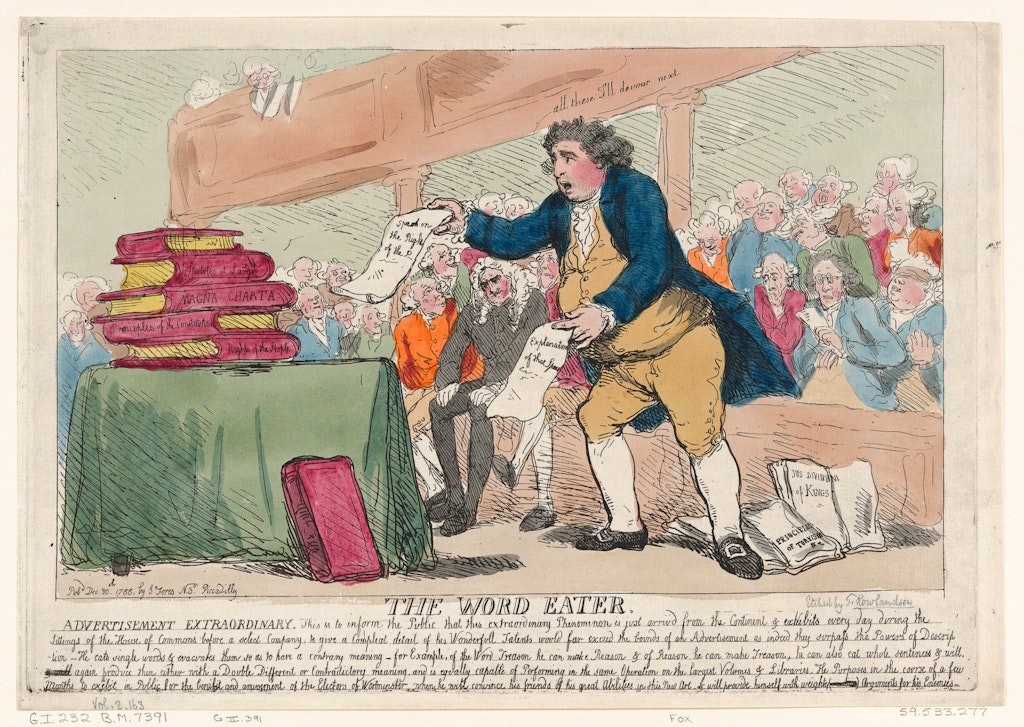A forever home
Architecture would be vastly more interesting if clients were happy to pay for character instead of accepting bland uniformity
This article is taken from the December/January 2023 issue of The Critic. To get the full magazine why not subscribe? Right now we’re offering five issues for just £10.
I have followed the career of David Kohn, a youngish architect (at least young by the standards of architects), originally from South Africa, trained in Cambridge and New York on a Fulbright Scholarship, who I first met when he designed a pop-up restaurant called Flash on the ground floor of the old Museum of Mankind building in Burlington Gardens.
Not long afterwards he designed, jointly with the artist Fiona Banner, a boat-like structure on the roof of the Hayward Gallery which you could stay in overnight through Living Architecture, the organisation established by Alain de Botton to allow people to experience contemporary architecture by spending a weekend in it.
Unlike many architects, he has concentrated on doing work with a slightly historical feel, interested in formal games
These two early works were an indication that he likes small-scale inventive projects and working with artists. Knowing what I did of his work, it did not surprise me that it was Kohn who designed a RIBA regional award-winning bright red brick house which had caught my eye in earlier in the year.
Unlike many architects, he has concentrated on doing work with a slightly historical feel, interested in formal games, sympathetic to the work of Robert Venturi and Denise Scott Brown, as demonstrated by his new Gradel Quadrangle for New College, Oxford, which is stone-built, mannered and vigorously curvilinear and should open next year; and his recent designs for the Sainsbury Wing (he was one of six shortlisted).
The latter involved the creation of a vast, new, double-height, oval polychromatic entrance hall, totally different in character from the more polite and reticent scheme by Annabelle Selldorf, which is now facing stiff opposition from Denise Scott Brown, former Presidents of the RIBA and the Twentieth Century Society. What, one wonders, would have been their response to a scheme so over-the-top ambitious if Kohn had won?
The Red House, as the house is called (a reference to Philip Webb) was a commission from an art world couple who, in 2011, bought an existing old house off a heavily wooded steep lane near Shaftesbury in Dorset as a retreat from their London life. The Georgian Group recommended an architect to reconfigure the existing house, but the project ran into difficulties with both the planners and locals. So, they tried several, more traditional, local architects who proposed demolishing the existing building.
Eventually, having spent a vast amount doing so, they asked David Kohn to design something new and more adventurous. But because it is in the middle of unspoilt farmland, the idea was that it should have a playfully vernacular character, as if it was a contemporary version of a farm building.

It has a touch of Voysey in its tall, free-standing chimneys and over-hanging eaves (one of the owners says these were inspired by his experience of the coolness buildings in suburban Delhi) and maybe there is also a reference to James Stirling in the use of bright green paintwork.
It’s an unusual mixture of the rural and the knowing. This has been described as post-postmodern, but it has less wilful eccentricity than most postmodern buildings, is more resolved, and has more of a desire to accommodate itself with its surroundings.
I visited the house on a wet October day. I am full of admiration for private clients who have chosen not to buy a
historic property or a barn to convert, but, instead, to design something that suits their own idiosyncratic tastes. They were determined to design it for the rest of their lives, so decided to do everything without steps — wide doors, parquet floors made out of endgrain larch, and a large lift to the first floor.
They wanted their young daughter to experience cooking as a central part of her life, so the kitchen is dead centre, with an electric Aga and an apse for the dining room table. There are sitting rooms at either end of the house, one for reading, the other for music. The walls are made out of breeze blocks which give the rooms a deliberate air of austerity, anti-luxurious (they describe it as “austerity chic”). On the other hand, the staircase which is immediately opposite the front door is an exceptionally elaborate and beautifully designed, nearly art nouveau, wood structure swirling up to the first floor.

The advantage of commissioning a house is that you can design everything exactly as you choose, with a laundry room on the first floor with a view out on to the fields. There is lots of storage space, which normally gets written out of new buildings, and an unexpected number of bedrooms compared to the apparently small scale of the house from outside.
The locals are apparently rude about the house as they walk past. They don’t like its redness, nor the green paint, nor the apparent disobedience of the design. But when most new houses in the country are little, standardised brick boxes, poorly constructed, with a pseudo-Georgian front door, I found it both admirable and encouraging to meet clients determined to do things differently, exercise close oversight over the design, and do everything entirely to their own specification.
Architecture would be vastly more interesting if only all clients were similarly engaged in the process and were happy to pay for character instead of accepting bland uniformity; and, likewise, if all architects were as happy as Kohn to work closely with clients on their requirements.
Enjoying The Critic online? It's even better in print
Try five issues of Britain’s newest magazine for £10
Subscribe














